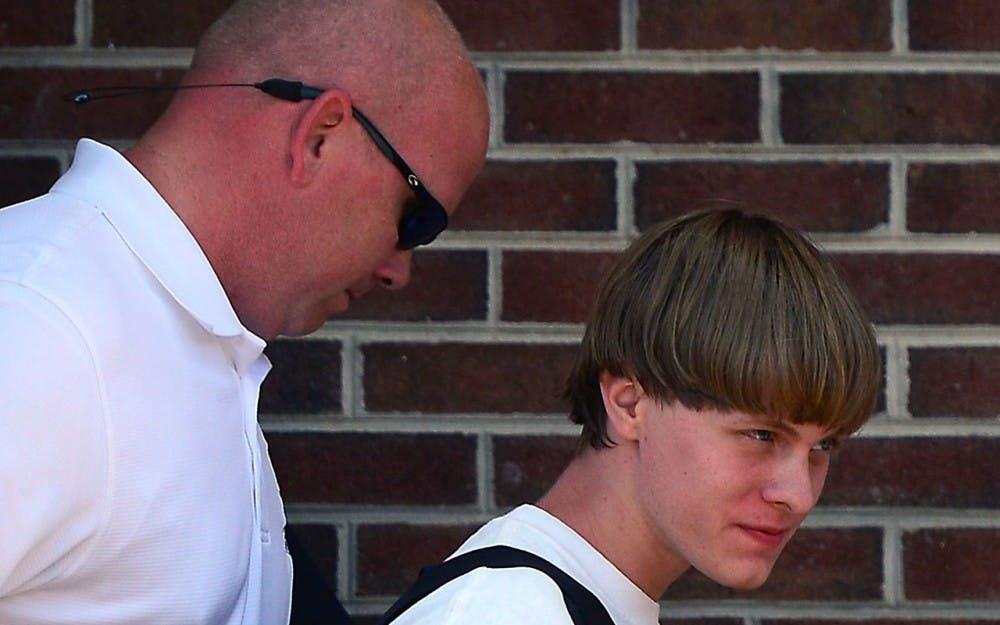The Charleston, South Carolina, church shooter has been moved to Indiana’s federal death row.
Dylann Storm Roof, 23, was convicted of murdering nine people at Mother Emanuel AME Church. Among his 33 federal charges were hate crimes and damage to religious property or destruction to religious belief. He is the first federal hate crime defendant to be given the death sentence.
He is being held at the United States Penitentiary, a high-security prison in Terre Haute, Indiana, with 1,409 inmates, according to its website.
Nationwide federal executions are fairly rare. Only three federal inmates have been executed in the past 30 years. Roof is the last of 62 people on federal death row. The most recent person to receive a federal death sentence before Roof was the Boston Marathon bomber, Dzhokhar Tsarnaev . All federal death row inmates are kept in Terre Haute.
The remoteness of the facility makes it ideal, said Jody Madeira, a law professor and capital punishment expert in the Maurer School of Law.
“It’s in the middle of nowhere,” Madeira said. “That’s where all the facilities are. That’s where the officials are trained.”
After the moratorium on the death penalty was lifted in 1976, the first person to be executed by the federal government was Timothy McVeigh, the Oklahoma City bomber. McVeigh was executed in 2001.
Since 1976, Indiana has executed 20 people, including McVeigh. A scarcity of lethal injection drugs throws a wrench in the process, making some states scramble to carry out executions. Arkansas tried to schedule eight executions in 11 days this month, rushing before an ingredient in its supply of lethal injection drugs expires at the end of April. Four of the eight inmates have had their executions stayed by the courts.
If lethal injection drugs become difficult to obtain, states have the option of employing older, less humane methods, including electrocution, hanging or a firing squad, Madeira said.
President Trump and Attorney General Jeff Sessions have both expressed their ardent support of capital punishment. It’s likely they may usher in a new wave of federal executions, Madeira said.
Because he was sentenced in federal court, Roof only has one possible level of appeal. Madeira said. It is likely he would be executed fairly quickly if he either loses or terminates his appeal, which would push him to the front of the list of federal executions. After terminating his appeal, McVeigh was executed within a year.
In the time leading up to their executions, prisoners are moved to the “death house,” where they are under constant surveillance, Madeira said. In the death chamber, there is space for 10 people to watch, including victim’s families, journalists and government officials.
For the execution of McVeigh, the government offered a closed-circuit broadcast for families of victims at the site of McVeigh’s attack. More than 230 people watched live in Oklahoma City. Madeira said whether or not a similar broadcast might be offered for Roof’s execution is up in the air. Federal prosecutors chose to pursue the death penalty for Roof, but many family members of Roof’s victims expressed dismay. They wanted to show him the mercy he did not show their loved ones.
On June 17, Roof entered Mother Emanuel AME Church in Charleston, a historically black church, and prayed with the congregation before murdering nine people. During his January jury trial, Roof expressed no remorse. Previously he had told FBI agents he’d been trying to start a race war.
“I felt like I had to do it, and I still do feel like I had to do it,” Roof said in his closing argument.
He was sentenced to death Jan. 11, 2017, and pleaded guilty to nine counts of murder in the same case April 10, 2017.




